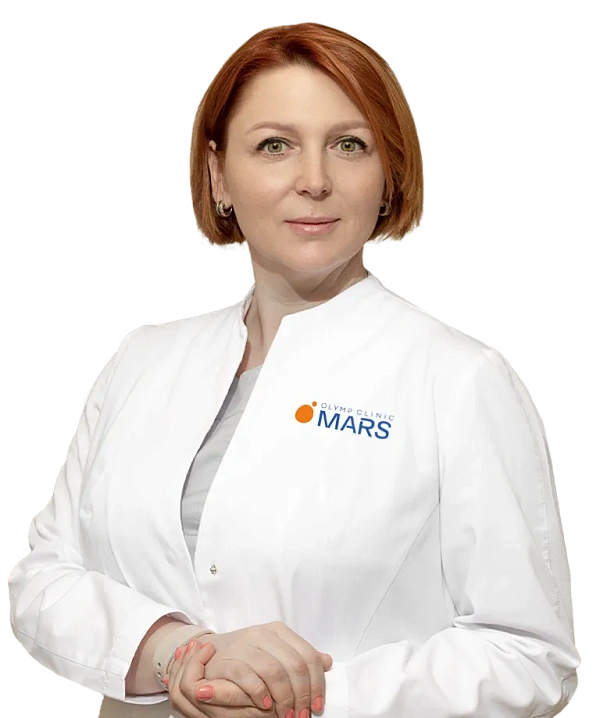Hysteroresection
Minimally invasive surgical removal of pathological changes in the uterine cavity, such as polyps, submucous nodes, synechiae and intrauterine septa.

Hysteroresection is performed using a hysteroresectoscope, an electrosurgical instrument. This device is inserted through the vagina and cervix, which allows the doctor to examine the uterine cavity and cervical canal, identify and eliminate intrauterine pathologies.
The procedure is effective for the treatment of diseases such as submucous uterine fibroids, polyps, synechiae and intrauterine septa, which can lead to menstrual irregularities, infertility and other gynecological problems. Hysteroresection allows to minimally injure tissues, preserve reproductive function and shorten the recovery period. Studies show that the removal of polyps and submucous fibroids significantly increases the chances of successful conception, as well as improves the overall quality of life of women.
A number of examinations should be performed before the operation: Blood tests (general, biochemical, for infections, coagulogram, blood type and Rh factor). A general urine test. Smear on flora and oncocytology. Colposcopy for a detailed examination of the cervix. Ultrasound of the pelvic organs. Fluorography and electrocardiography.
Hysteroresection is performed under general or local anesthesia and takes from 30 to 60 minutes. The procedure begins with fixation of the cervix, after which the doctor expands the cervical canal to the desired diameter and measures the length of the uterine cavity. A hysteroresectoscope is inserted into the cervical canal and uterine cavity to examine the uterine walls, visually assess the condition of the endometrium and the presence of pathologies. Depending on the detected disease, the surgeon uses different electrodes: Cutting loops are used to remove fibroids (myomectomy). An electric knife or straight loops are used for metroplasty and dissection of synechiae. Spherical or cylindrical electrodes are used for endometrial ablation.
For hysteroresection, the following are used: A hysteroresectoscope with a camera for imaging the uterine cavity and cervical canal. Electrosurgical instruments for the removal of polyps, nodules and other formations.
After the procedure, the patient may experience mild discomfort and minor spotting. Full recovery takes 1-2 weeks. During this period, it is recommended to avoid sexual activity, intense physical exertion and strictly follow the doctor's recommendations.
Benefits
Minimal invasiveness
The procedure is performed without incisions, through natural pathways, which reduces recovery time and reduces the risk of complications.
High precision
Visual inspection allows the surgeon to accurately remove pathological tissues, minimizing damage to healthy areas.
Improving reproductive function
The elimination of intrauterine pathologies increases the chances of successful conception and normalizes the menstrual cycle.
Fast recovery
Patients quickly return to normal life and activity due to the minimal trauma of the procedure.
Frequently Asked Questions
What are the indications for hysteroresection?
How soon can I plan a pregnancy after the procedure?
Are there any restrictions on physical activity after hysteroresection?
Didn't find an answer to your question?
You can describe your problem in detail and ask a question to the doctor. He will answer you and help you find a solution
Врачи
Смотреть всех врачейCandidate of Medical Sciences. Gynecologist-obstetrician. Head of the gynecology department.
Similar referral activities
Implantable pacemaker programming
Adjustment and monitoring of an implanted pacemaker to optimize heart rhythm.
SIBO breath test
The hydrogen-methane breath test is a noninvasive method of diagnosing small intestinal bacterial overgrowth (SIBO). This test measures the concentration of hydrogen and methane in exhaled air after the patient ingests lactulose. This helps identify an imbalance in intestinal bacterial flora.
13C-urea breath test
13C-urea breath test is a painless, non-invasive method used to detect Helicobacter pylori infection in the stomach. It is based on the ability of H. pylori to break down urea using the enzyme urease.
Endoscopic removal of epithelial formations of the gastrointestinal tract (removal of polyps)
Most gastrointestinal polyps belong to precancerous conditions, and colon polyps are essentially the only way to develop cancer, therefore they require mandatory removal.
Consultation of a gynecologist
Medical examination aimed at diagnosing, treating and preventing diseases of the female reproductive system.
Arthroscopy of the ankle joint
Ankle arthroscopy is a minimally invasive surgical procedure used to diagnose and treat various diseases and injuries of the ankle joint.
